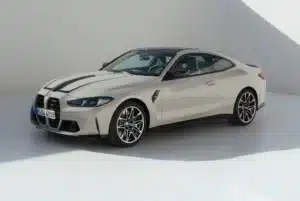
Crowning glory of British auto maker was the Aston Martin DB7, which came out in 1994. The Aston Martin DB7, the then top-selling Aston Martin car to date, set new trends for grand tourers by combining performance and passion, luxury and comfort, style and elegance. Its powerful V12 engine, Aston Martin DB7 Vantage, the company flagship, set the bar even higher to drive.
Design and Development

Ian Callum’s Aston Martin DB7 design was a sophisticated blend of contemporary style with traditional Aston Martin styling motifs. The DB7, which was constructed on a humble modified Jaguar XJS platform, featured a slender, wedge-shaped body and upright grille that made the car appear as though it was a grand tourer. The design and lines of the vehicle, its stretched bonnet and cut rear deck, looked back to Aston Martin’s past but with improved features which would be more appealing to the younger purchaser.
Power and Performance
DB7 (1994–1999)
The initial Aston Martin DB7 cars employed a 335-horsepower, 361 lb-ft-of-torque supercharged 3.2-liter inline-six. The layout allowed the car to achieve an indicated top speed of 165 mph and 0-60 mph in approximately 5.7 seconds. The powerplant was ideally suited to grand touring due to its power delivery in a smooth and very responsive fashion.
1999–2003
Aston Martin introduced the Aston Martin DB7 Vantage with its 5.9-liter V12 engine that generated 400 lb-ft torque and 420 horsepower. The engine was estimated to hit a top speed of 186 mph, accelerating the Vantage from 0 to 60 mph in 4.9 seconds. The Ford/Cosworth co-developed V12 engine provided a significant edge over the inline-six and raised driving pleasure to another level.
Transmission and Drivetrain
There were manual and automatic transmission options for the Aston Martin DB7 to suit a range of driving styles. While there was a four-speed automatic, the basic DB7 included a five speed manual. The Aston Martin DB7 Vantage also included a five-speed automatic transmission for a more relaxed cruise and a six speed manual transmission for a more thrilling drive. Even traction and handling came through the rear wheel drive system with an integrated limited slip differential.
Chassis and Suspension
The DB7’s back was robust enough to compete with grand tourers due to its steel monocoque chassis. Double wishbone suspension was bolstered by anti-roll bars and coil springs to provide handling accuracy and comfort in tandem. The Aston Martin DB7 Vantage was also enhanced with bigger Brembo brakes and suspension calibration to support the increased horsepower and driving dynamics across the board.
Interior and Features

Equipped with Connolly leather interior trim and Wilton carpets, and more than a page of options like air conditioning, motorized seats, and a top of the line stereo system, the Aston Martin DB7 was opulent inside and out. The Vantage cars’ interior was tastefully finished with burr walnut cockpit inlays and Alcantara headlining, among other amenities. Aston Martin’s dream of creating a superior drive was reflected in the interior design and construction.
Variants and Special Editions
DB7 Volante
Its soft-top convertible version, the Volante, provided open-top driving without compromise in luxury or performance. Apart from the coupes’ attractive appearance and responsive handling, the Volante initially appeared in 1996 with an electronic soft top.
DB7 Vantage Zagato
Aston Martin built a small batch of Aston Martin DB7 Vantage Zagato vehicles in association with Italian design house Zagato in 2002. The vehicles were extremely popular among fans because of their distinctive stylistic aspects, such as a glass double-bubble canopy and custom interior design.
DB7 Vantage GT and GTA
The 2002 addition of the GT and GTA models provided superior handling and performance. The GTA had a five-speed automatic transmission and the GT a six-speed manual. Both enjoyed superior brakes, suspension and aerodynamic components to make for an even more thrilling ride.
Also Read: Audi Q8 e-tron Review
Legacy and Collectibility
The Aston Martin DB7 was the largest-selling Aston Martin in history, with over 7,000 built. It has become an accepted classic because of its mix of comfort features, contemporary performance, and classic appearance. The DB7, particularly in Vantage trim is much in demand by collectors and enthusiasts today. The eternally good looks and heritage within Aston Martin guarantee it will always be a highway landmark.
The Aston Martin DB7 continues to stand as proof of the union of luxury and performance being upheld by the company. In its release, Aston Martin embarked into a new era, claiming its place in motor history and establishing the groundwork for what was to follow.
Frequently Asked Questions
Q1: What is the distinction between the DB7 Vantage and the standard DB7?
In place of the DB7’s normal 3.2-liter supercharged inline-six, the Aston Martin DB7 Vantage features a 5.9-liter V12 engine with 420 horsepower. As a result, it has better acceleration and top speed ratings. Other specifications of the Vantage include re-tuned suspension, bigger brakes and distinctive stylistic design.
Q2: Are there any special editions of the DB7?
It has had several significant special editions, including the Aston Martin DB7 Vantage GT and GTA models, which had higher performance and ha ndling-packaged equipment and the DB7 Vantage Zagato, an extremely low-volume car with special styling by the Italian design firm Zagato.
Q3: Is the DB7 a good investment to keep?
Due to its limited production sequence, long-term looks, and historical significance to Aston Martin, the Aston Martin DB7 specifically the Vantage versions is a sound investment for vintage automobile collectors. They are a sound investment and have been increasing.


